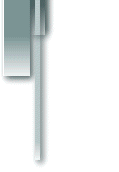
In Rudiments, we agreed that the 26 essential rudiments of drumming form the foundation for all drumming and rhythmic skills. Most drumming rhythms - when broken down - can be found to be a combination and re-arrangement of some basic rudiments.
This page shows how to take a simple rudiment like the paradiddle and turn it into some interesting rhythms. By omitting notes, inverting sticking, adding grace notes, and combining the feet and hands, we can come up with some fairly cool grooves that seem to bear little resemblance to our humble rudiment, but DO have as their underlying pattern the lowly paradiddle.
![]()
Here is the Paradiddle. If you don't know how to play this, better start practicing now!

There have been many exercises written on how to play the paradiddle around the kit, usually just using the hands. However, our concept is to integrate the paradiddle into a rhythm that can be used as the foundation for a groove.
Exercise #1

In this first groove, the paradiddle is played between the snare and the bass drum. This is probably the simplest application. "Pattern 1" above starts the paradiddle with the snare; "Pattern 2" starts it with the feet.
The next five exercises will give you different examples of starting the paradiddle in each of the two patterns.
Exercise #2

In this exercise, the paradiddle is played between the ride cymbal and the snare.
Exercise #3

Here the paradiddle is played with the ride cymbal and the bass drum. The snare ostinatoes on the quarter note.
Exercise #4

This pattern is similar to Exercise #1: the difference is that the ride cymbal is hitting on the "and" of the quarter note. The feel of the groove is quite different.
Exercise #5

Once again, we have taken Exercise #2 and placed the ostinato voice - this time the bass drum - on the "and" of the quarter note.
Exercise #6

As in #4, and #5, we have placed the ostinato (the snare) of Exercise #3 on the "and" of the quarter note.
![]()
Now that we have the concept down, here are a serices of exercises that stretch the paradiddle into apparent unrecognizability. However, if you examine each groove, you will see that our humble rudiment is the progenitor of a whole range of interesting rhythmic structures!
As with the previous six examples, each of these exercises can be split into two different sticking patterns. I have not included those variants here - see if you can figure them out for yourself! It would also be a good idea to pactice these exercises with regular sticking, then switch to your ambidexterous sticking! See Ambidexterity for more information.
Let me know what other patterns you've come up with!

















![]()
![]()
![]()
